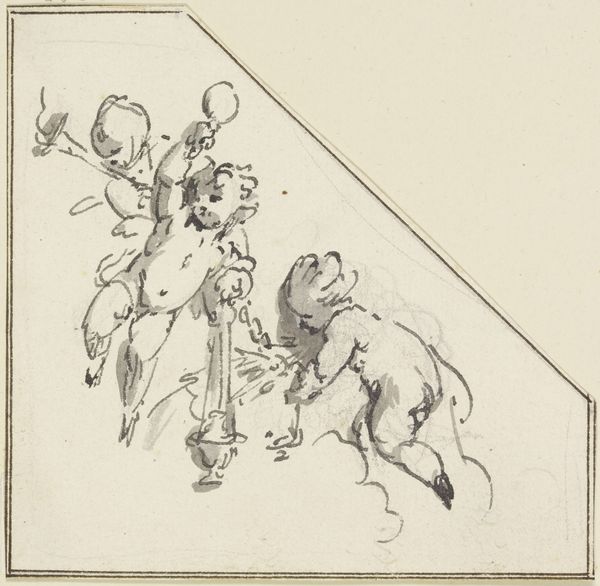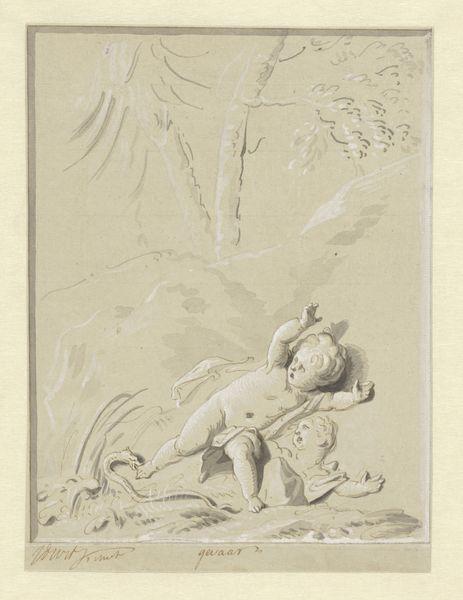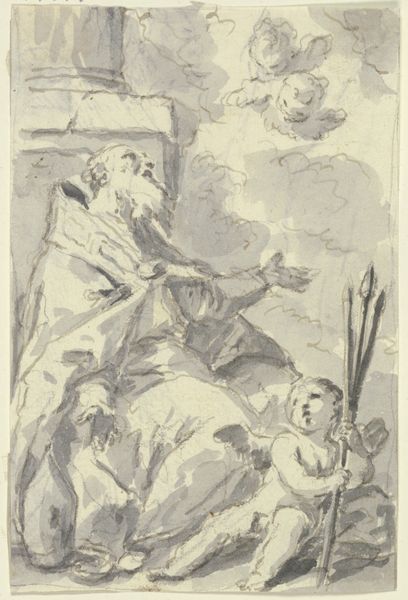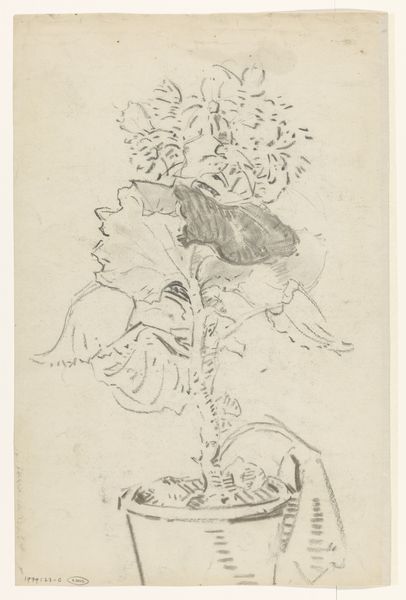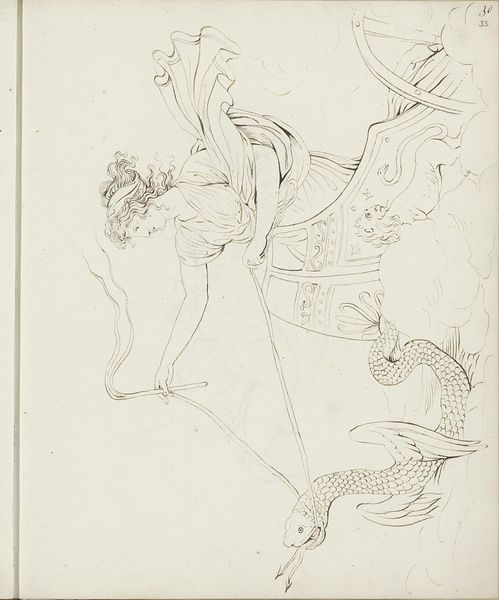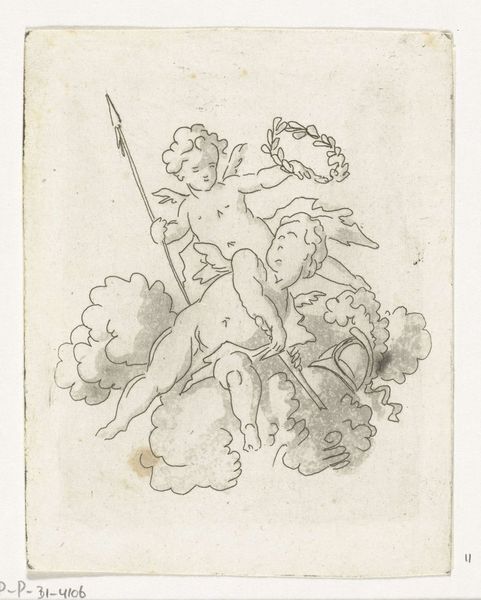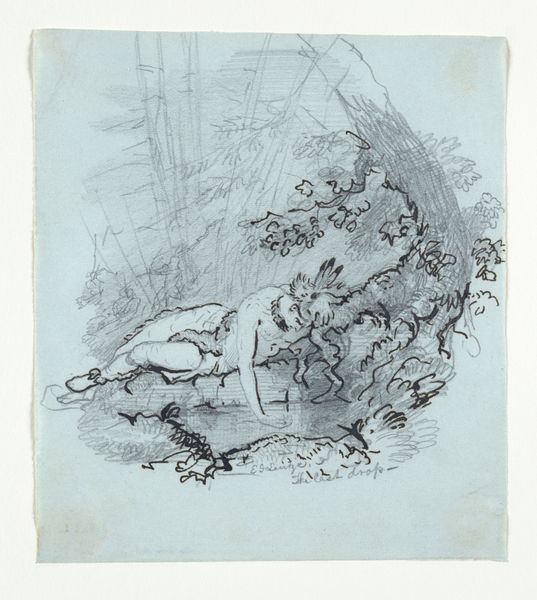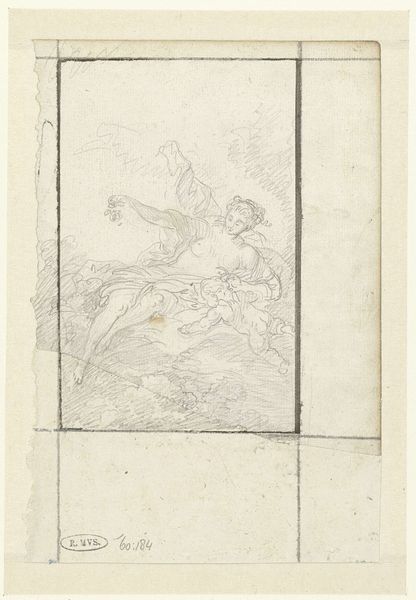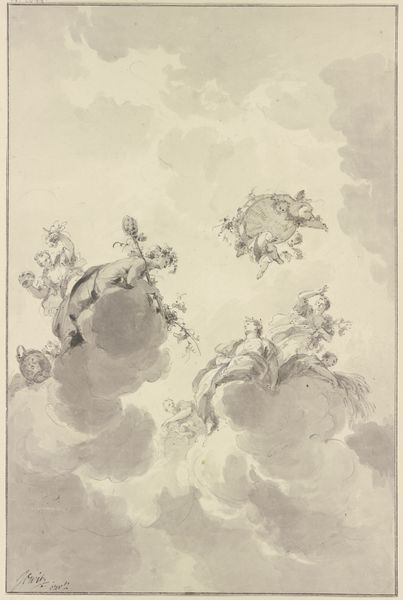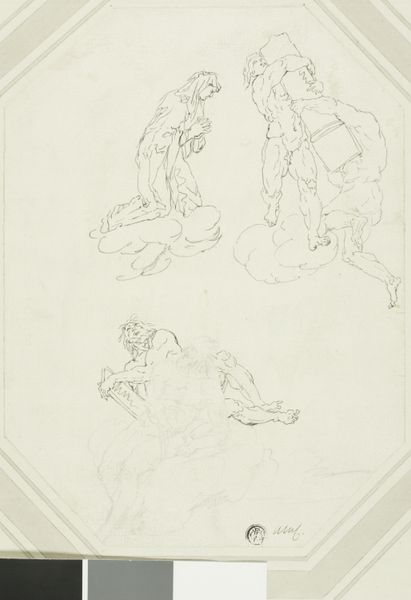
drawing, ink, chalk
#
drawing
#
allegory
#
baroque
#
figuration
#
ink
#
chalk
Copyright: Public Domain
Editor: This drawing, "Hovering Cupids" by Jacob de Wit, is rendered in ink and chalk. It looks like a study for a larger work, sketched on a corner piece of paper. What strikes me is the sheer materiality of the drawing; the chalk and ink creating form and depth. What do you see here? Curator: Precisely! Note how De Wit's workshop practices shape the final image. We must consider the economic aspects of his production, how materials available – ink, chalk, and the paper itself - dictate the feasibility of mass production and therefore also influence the potential distribution of the cupid motif across different social strata and decorative objects. The ink, likely easily procured, combined with the readily accessible chalk enabled efficiency. Consider too the paper substrate and how De Wit's choices enabled particular aesthetic strategies but were equally contingent on trade routes and production capacities beyond his immediate studio. How does this relate to labor conditions of artisans? Editor: That's a completely different perspective than I had considered. So the ease with which de Wit could obtain and use these materials reflects the availability and affordability, and by extension its appeal to workshops or possibly less affluent patrons? Curator: Absolutely. Consider it within broader context of artistic labor. Was De Wit working to rapidly generate popular images? This is suggested through efficient techniques and choice of readily obtainable material and therefore more widespread dissemination across society at the time through possibly prints. How do those labor practices shape our perception of 'high art'? Editor: This reframes how I understand drawings. The material realities of production, like access to ink and paper, influence not only the image but also its accessibility and social impact. Curator: Indeed, analyzing the materials and mode of production opens doors to wider questions about labour, dissemination, and the broader social contexts that defined the art. Editor: I never thought about drawings this way before! Thank you.
Comments
No comments
Be the first to comment and join the conversation on the ultimate creative platform.

